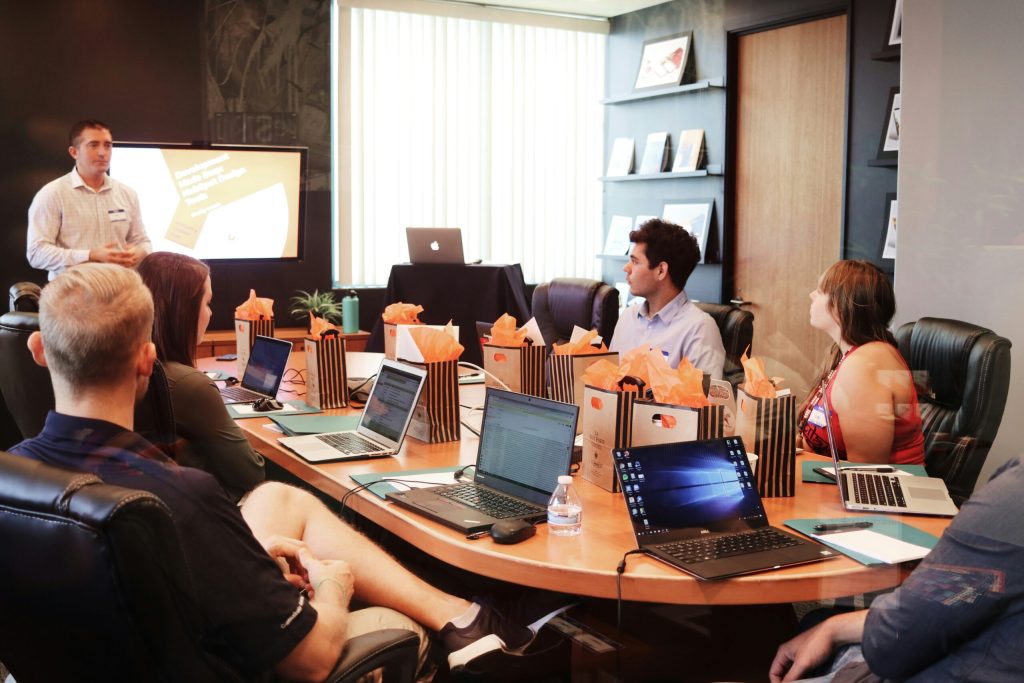5 Ways Powerful Ways to Prepare your People for Seismic Change
+ Redeem your free engagement and wellbeing guide!
You will know just how much has changed in the world of work since the start of the pandemic - and how much more will still change now and in the future.
We’re talking about massive changes to the working landscape as we know it; will we see a 4-day week? Will we see remote-working become the norm? Will companies shift from stationary office-space to hot-desking? We haven’t even touched on the seismic structural changes that will take place in millions of businesses around the world.
Everything is about to change, and what we knew to be normal in the workplace, is going to be very abnormal now.
If this is a hard pill to swallow, imagine what your employees must be feeling. Anxiety, fear, uncertainty, stress - many feelings and emotions harmful to their wellbeing, engagement and performance.
This is when the strength, inspiration and support of leaders is most crucial: only leaders can prepare and lead their people through significant change, effectively and successfully.
Here are 5 Powerful ways (and things to consider) in order to prepare you people for change:
1. Uncertainty affects people’s feelings, which affects behaviour
TIP: ESTABLISH CERTAINTY
“Humans are programmed to like certainty. We’ve all had times where something that ‘should’ have happened doesn’t and we all know that feeling of annoyance that creeps up. If what happens is something we really didn’t want, well, annoyance blows into anger for some,” says James Kessick of Netpicks, a trading platform that helps traders deal with uncertainty.
Big changes - which may include uncomfortable changes - will absolutely provoke uncomfortable feelings, which leads to behaviours that are destructive or harmful. Changes in the working landscape may cause people to feel fearful, which may lead to underperformance, or worse, cause them to act out destructively.
Leaders need to establish a sense of certainty - which can only be done if they’ve planned thoroughly and are certain, themselves, about the impending changes, the obstacles that lay ahead and the possible outcomes to be expected. To successfully implement and come out the other side of the changes, leaders need to prepare and support the wellbeing of their people.
2. People desire control
TIP: DEMONSTRATE CONTROL
Humans feel safer when they feel they have some sort of control over what’s happening around them and to them. Feeling out of control, once again, influences feelings which influences behaviour.
While employees may have little control over the changes happening in/to a business, they feel a sense of control when their leaders demonstrate control. Employees see themselves in their leaders, and most time, feel their leaders have their best interests at heart (at least it should be this way). When their leaders are in control, employees feel safer, they feel led and are less inclined to feel negative feelings.
3. People are afraid of the unknown
TIP: ANTICIPATE AND EXPRESS THE POSSIBLE OUTCOMES
There is no one more afraid of the unknown than employees. Right now, with millions of people being furloughed or losing their jobs, employees are even more afraid. The thought that this could very well be them, is crippling. The best thing for leaders to do is to map out what the future may look like. Take fear-of-the-unknown off the table. Anticipate and let your people know about the possible outcomes - even if these outcomes don’t look all that pretty. Employees would rather know and prepare themselves than be left in the dark.
Once again, if leaders expect to move through these changing times efficiently and effectively, they ought to reduce the negative feelings that may arise amongst their people. If their people are in the best possible mindset to perform, the entire business thrives.
4. People want their feelings acknowledged
TIP: LISTEN, LEARN AND EMPATHISE
Employees are human, emotional beings. Just like everyone else, big changes are uncomfortable, and they will absolutely have feelings about it - no matter how well you prepare them, and no matter how great of a leader you are. Your employees have feelings, and they want them heard.
It’s in a leader’s best interest to get on the side of their people, and the best way to do this is to hear them and empathise with their feelings. Employees just want to know there’s someone ‘on the other side’ that understands their point of view and takes these into account when decisions are made.
Redeem your free engagement and wellbeing guide
5. People want to feel seen
TIP: GIVE RECOGNITION WHERE IT’S DUE; ACKNOWLEDGE THEIR PROGRESS
If you’re expecting your people to perform and align with the change, you have to give something back. In fact, they expect this to some degree. One of the greatest ways to say thank you is to see your people’s progress and acknowledge them for it. This goes a long way - and it boosts motivation too. Employees want to be seen, valued and acknowledged, and if you can do this, you’re on your way to successfully implementing change, with the support of your people.
We at Inpulse help companies better understand their people through pulse surveys.
We place a unique focus on emotional analytics so that our clients understand what their people truly feel, need and want.
With this powerful data, organisations are able to make better decisions aligned to their people, and in so doing, nurtures and improves engagement and wellbeing.
When engagement and wellbeing are nurtured, the entire organisation thrives.



